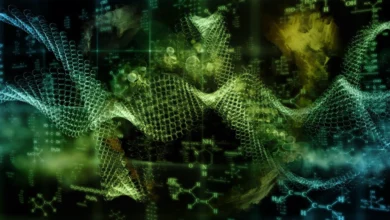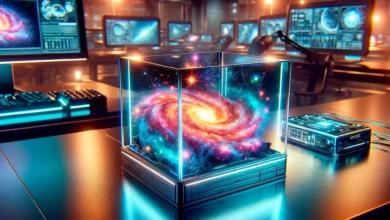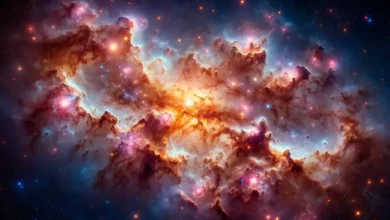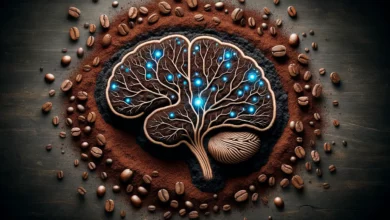Latest Articles
-
Nov- 2023 -26 NovemberBiochemistry

Revolution in Organic Synthesis: Scientists Revive Century-Old Technique
Lead Image: Chemists have resurrected the Barbier method using mechanochemistry, replacing hazardous solvents with a solvent-free approach. This advancement promises safer and more sustainable manufacturing, particularly in pharmaceuticals. Organic synthesis is the art of creating molecules, where chemists craft molecules essential for pharmaceuticals, agrochemicals, and high-tech gadget materials, including those in smartphones. Think of it as playing with LEGO at a microscopic level – chemists connect simple building blocks to create complex molecules, just like snapping together LEGO bricks to make intricate structures. One crucial step in this puzzle is creating a bond between two carbon atoms. Like LEGO bricks…
Read More » -
26 NovemberAI

The Search for Alien Life: Scientists Develop Method of Identifying Life on Other Worlds With 90% Accuracy
Lead Image: A team of U.S. scientists has developed an AI-based system capable of detecting signs of life with 90% accuracy. This system can distinguish between biological and abiotic materials. It holds significant implications for understanding life’s origins on Earth and Mars and detecting extraterrestrial life, potentially transforming astrobiology. The system demonstrates 90% accuracy in distinguishing between biological and non-biological samples. Humankind is looking for life on other planets, but how will we recognize it when we see it? Now a team of scientists in the United States has created an artificial intelligence system capable of identifying signs of life…
Read More » -
24 NovemberAstrophysics

Simulating the Cosmos: Is a Miniature Universe Possible?
Lead Image: The journey to simulate the universe, as exemplified by Michael Wagman’s work, highlights both the historical evolution and the contemporary challenges in this field. While full simulation is out of reach, advancements in computing and algorithms are gradually enhancing our understanding of cosmic phenomena. Wouldn’t it be nice to have a computer answer all of the biggest questions in the universe? In his first year of graduate school, in 2013, Michael Wagman walked into his advisor’s office and asked, “Can you help me simulate the universe?” Wagman, a theoretical physicist and associate scientist at the US Department of…
Read More » -
24 NovemberAstronomy

Hidden Wonders: Webb Space Telescope Detects Unexplained Structures in Heart of Milky Way
NASA’s James Webb Space Telescope has captured a detailed image of the Sagittarius C region near the Milky Way’s core, revealing a dense star-forming area with numerous protostars and infrared-dark clouds. This observation offers new perspectives on star formation and the dynamics of our galaxy’s center. (Artist’s concept, see Webb image below.) The play of darkness and light in our galaxy’s crowded core is put on display like never before. A bright field of gas sweeps around the edge of a dark, dense cloud where young stars are bursting out to take their place in the universe. They join an…
Read More » -
24 NovemberBrain

Brewing a Cure: How Coffee Grounds Could Prevent Alzheimer’s, Parkinson’s, and Other Neurodegenerative Diseases
Lead Image: University of Texas at El Paso researchers have found that substances extracted from used coffee grounds may offer a new way to treat neurodegenerative diseases. Their study shows that these compounds, Carbon Quantum Dots, can protect brain cells from damage caused by diseases like Alzheimer’s and Parkinson’s, especially in their early stages. A groundbreaking study at The University of Texas at El Paso reveals that compounds derived from spent coffee grounds could potentially prevent or treat neurodegenerative diseases like Alzheimer’s and Parkinson’s by protecting brain cells. Neurodegenerative disorders, including Alzheimer’s, Parkinson’s, and Huntington’s, affect millions of people in…
Read More »










